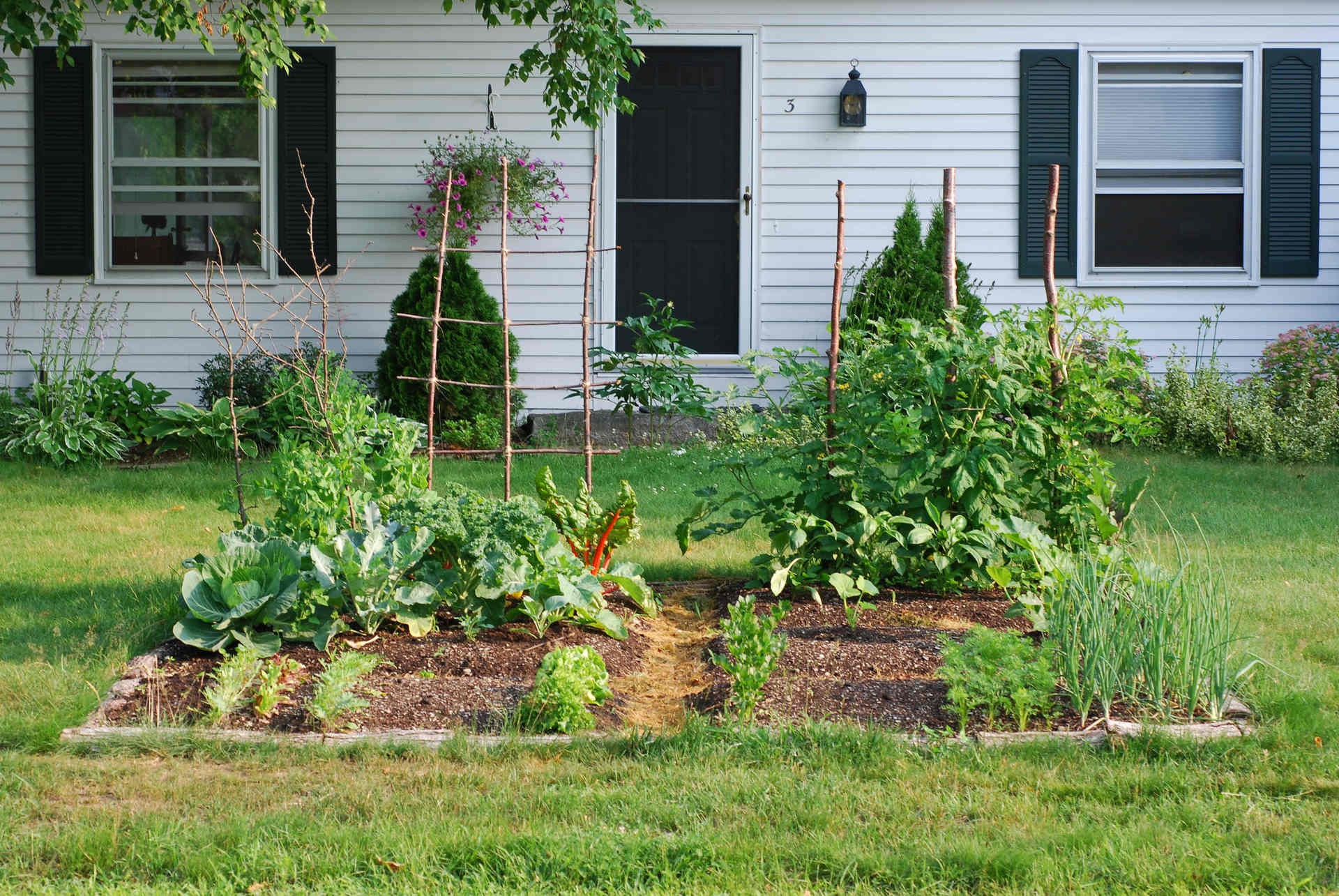家庭菜園は、日常生活の中で自然と深く関わりながら、環境への理解や感謝の気持ちを育む素晴らしい方法です。自分の手で植物を育て、成長を見守ることで、自然のサイクルを感じ、生命の大切さを実感することができます。家庭菜園を通じて、子どもたちも自然とのつながりを深め、環境への意識が高まります。
この記事では、家庭菜園がどのように自然とのつながりを育むかについてと、その実践方法を紹介します。
家庭菜園が育む「自然とのつながり」
1. 自然のサイクルを実感する
家庭菜園を行うことで、植物の成長過程や季節ごとの変化を実感することができます。種をまき、芽が出て、花が咲き、実がなる。この一連のサイクルを目の前で見ることができるのは、子どもにとって貴重な体験です。
- 実践方法:
毎日少しずつ観察をし、成長の過程を記録します。子どもと一緒に変化を見守りながら、「今日はどんな変化があった?」と声をかけましょう。
2. 生命の大切さを学ぶ
家庭菜園では、植物の命を育てる責任感を育むことができます。水やりや手入れをすることで、命を育てる大切さや、その過程での注意深さを学びます。失敗したり、枯れてしまった植物を見て、命の尊さを感じることができます。
- 実践方法:
子どもと一緒に植物を育てることで、育成の責任を共有します。枯れてしまった植物には「なぜそうなったのか」を一緒に考え、今後どう改善できるかを話し合うことも大切です。
3. 環境への意識を高める
家庭菜園は、食べ物の生産過程を知り、環境問題への意識を高めるきっかけとなります。化学肥料や農薬を使わず、オーガニックで育てることで、自然環境を守る大切さを実感できます。
- 実践方法:
有機栽培やコンパニオンプランツ(植物同士を一緒に育てる方法)を取り入れて、環境に配慮した育て方を実践します。子どもにその理由を説明し、エコな選択肢の重要性を伝えましょう。
4. 食育としての効果
自分で育てた野菜を収穫し、食べることで、食の大切さや自然とのつながりを実感できます。食物がどこから来るのかを知ることは、食べ物に対する感謝の気持ちを育てます。
- 実践方法:
植物が収穫できる頃に、子どもと一緒に料理をする機会を作ります。収穫した野菜を使って簡単な料理を作り、「自分たちで育てたものを食べる」という喜びを感じさせましょう。
家庭菜園で実践できる自然とのつながりを育む活動
1. 種まきと芽の観察
家庭菜園の始まりは種まきからです。種をまき、発芽するまでを観察することで、成長過程に対する興味を育てることができます。
- 実践方法:
種をまいたら、毎日観察して芽が出るまでの時間を子どもと一緒に待ちましょう。芽が出る瞬間は、子どもにとって感動的な経験となります。
2. 四季折々の変化を楽しむ
季節ごとに異なる植物を育て、四季の変化を感じることで、自然のサイクルや生き物とのつながりを学びます。
- 実践方法:
季節に合わせた野菜や花を育て、季節ごとに何を育てるかを考えましょう。春には春野菜、夏には夏野菜といったように、季節に合った作物を育てることで、季節感を味わえます。
3. 自然素材を使ったコンポスト作り
家庭菜園で出る生ゴミを使ってコンポスト(堆肥)を作ることで、循環型の生活を学べます。生ゴミを資源として再利用することは、環境にも優しい取り組みです。
- 実践方法:
食べ残しや植物の剪定などをコンポストに加え、時間をかけて堆肥を作ります。完成した堆肥は菜園に使って、再生可能な資源を学びましょう。
4. 動物たちとの共生を学ぶ
家庭菜園では、虫や小動物も一緒に育っています。彼らと共生し、どのようにして害虫を減らすか、またはどんな動物が植物に役立つかを学ぶことができます。
- 実践方法:
天然の害虫駆除方法や、良い昆虫(例えばミツバチやてんとう虫)を呼び寄せる方法を調べ、実際に実践してみましょう。子どもと一緒に害虫を捕まえ、害虫駆除の方法を考えるのも学びになります。
まとめ
家庭菜園は、自然とのつながりを深めるための貴重な手段です。日々の手入れを通じて、自然のサイクルや生命の大切さ、環境への意識を学ぶことができます。以下の活動を通じて、親子で楽しく自然と関わりながら、感謝の気持ちを育んでみてください:
- 種まきと芽の観察
- 四季折々の植物の変化を楽しむ
- コンポスト作りで循環型生活を学ぶ
- 動物や昆虫との共生を学ぶ
家庭菜園を通じて、自然との絆を深め、環境に優しいライフスタイルを実践していきましょう。
Nurturing a “Connection with Nature” Through a Home Garden
A home garden is a wonderful way to engage with nature on a daily basis, fostering an understanding of the environment and cultivating an appreciation for the natural world. By growing plants and observing their growth, we can feel the cycles of nature and experience the importance of life. A home garden allows children to deepen their connection with nature and increase their environmental awareness.
This article introduces how a home garden nurtures a connection with nature and provides ideas for implementing it.
How a Home Garden Nurtures a “Connection with Nature”
1. Experiencing the Cycle of Nature
Through a home garden, you can witness the growth of plants and the seasonal changes that occur. Planting seeds, watching them sprout, and seeing flowers bloom and fruits grow—this entire cycle can be experienced firsthand, which is a valuable lesson for children.
- How to Implement:
Observe the garden daily and record the changes. Ask your child, “What changes have you noticed today?” to engage them in the process of discovery.
2. Learning the Value of Life
Tending to plants in a garden teaches children responsibility, as they are involved in watering and taking care of the plants. Through these activities, children learn the importance of nurturing life and the careful attention it requires. When plants wither or die, it offers an opportunity to reflect on the value of life.
- How to Implement:
Involve your child in caring for plants and discuss the importance of nurturing them. If a plant dies, talk about why it happened and how to improve care next time.
3. Raising Environmental Awareness
A home garden helps children understand where food comes from, raising awareness about the importance of food production and environmental conservation. Growing plants organically, without chemical fertilizers or pesticides, allows children to see how their choices affect the environment.
- How to Implement:
Practice organic gardening by using natural fertilizers and companion planting. Explain the reasons behind these choices to your child to emphasize the importance of eco-friendly gardening.
4. Teaching About Food and Sustainability
By growing their own food, children gain a deeper understanding of the food production process and develop an appreciation for what they eat. This also fosters a sense of gratitude for the food they consume.
- How to Implement:
When the harvest is ready, involve your child in preparing meals using the homegrown vegetables. Sharing the joy of eating food they’ve grown helps them feel connected to the natural world.
Activities to Foster a Connection with Nature Through a Home Garden
1. Planting Seeds and Observing Sprouts
Planting seeds and observing their growth provides an excellent opportunity to teach children about the life cycle of plants.
- How to Implement:
Plant seeds together and monitor their growth daily. Discuss the changes as the seeds sprout and grow into plants, and encourage your child to keep a record of the changes.
2. Enjoying Seasonal Changes
By growing different plants throughout the year, children can witness the changes each season brings and better understand the cycles of nature.
- How to Implement:
Plan to plant seasonal vegetables and flowers, adjusting the garden according to the seasons. Discuss what plants grow best in each season and how nature changes throughout the year.
3. Composting with Natural Materials
Teaching children how to compost helps them understand recycling and the natural process of breaking down organic matter.
- How to Implement:
Set up a compost bin for kitchen scraps and garden waste. Let your child participate in adding materials to the compost and explain how organic matter turns into nutrient-rich soil.
4. Learning to Coexist with Animals and Insects
A garden is home to many animals and insects. Children can learn about how these creatures contribute to the ecosystem and how to care for them.
- How to Implement:
Encourage children to observe the insects and animals that live in or visit the garden. Teach them about beneficial insects like bees, ladybugs, and butterflies, and discuss how they help plants grow.
Conclusion
A home garden is a powerful way to nurture a connection with nature. Through daily care and observation, children can learn about the cycles of life, the importance of nurturing, and how their actions impact the environment. Here are some activities to consider:
- Planting seeds and observing growth.
- Enjoying the seasonal changes in the garden.
- Composting to learn about sustainability.
- Learning to coexist with animals and insects.
By fostering a deeper connection with nature through a home garden, you can teach your child valuable lessons about the environment and sustainability.




コメント